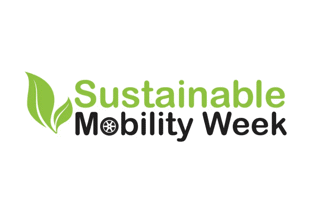By Justin Whitston, chief executive of Fleet-on-Demand
The world of mobility is evolving and a diverse range of new transport strategies are being implemented by a few, forward-thinking corporates, SMEs and the public sector, to cut fleet costs and reduce emissions.
Some early adopters are looking beyond car sharing, car pools and self-driving cars to the bigger picture - greener transport links, reduced congestion and improved accessibility to alternative travel.
What’s clear, is that mobility has different meanings and different use cases, depending on the function of the fleet. However, reducing the cost of managing and running both corporate and grey fleets is a key challenge for many organisations.
Transportation adviser, Paul Barter has confirmed the longstanding claims by urban planners that on average, cars are parked 95% of the time.
For fleet managers, this is a massive inefficiency on cost and resource. Car schemes mean that fleet assets are parked up taking space on commercial property, incurring maintenance, insurance and repair costs, leaving fleets with expensive assets that are rarely used.
Fleet managers are also facing an overspend on taxis, trains and other modes of transport, used alongside the company car. Often these additional costs are recouped via expense processes or systems.
Increasingly organisations are under pressure to provide alternatives and car and ride-sharing services are being adopted to make savings.
Just recently, Ford expanded its Chariot ride-hailing minibus service to target businesses in London, covering the Stockley Park development. Already available in the US, the service launched minibuses in four routes in London in February, in a move to help commuters plug gaps in public transport.
Today, employees can access a vehicle anywhere from one hour to one year via contract hire, PCH, daily rental, car club, car share, ride hailing or a taxi.
Why on earth would organisations continue to own, or long-term lease, mainstream vehicles that attract significant whole life costs?
Now it’s time to start to think outside the box and build new technologies and mobility services that place the employee at the heart of mobility rather than the asset.
Fleet providers and travel management companies have been providing employees with services that connect different modes of transport together into a single invoice for years.
Mobility solutions go well beyond this. They can power business journeys and analyse incredible amounts of data across transportation choice, location and routing data, miles driven, periods of use, start and end points, fuel costs, total costs and patterns of repeat usage.
Using data and connected public and transportation providers, organisations can create mobility solutions that adapt to the needs of the sector they are working with, or the core mobility objectives of their business.
Transport can be viewed as a vehicle, a driver, a billing period and method of payment, all used on demand.
It can be configured to the individual’s requirements and using a general mobility allowance, can include cars on demand, as well as car clubs, taxis and public transport when needed. This mobility blend can be tailored to the individual and all cost of ownership is removed.
Successful mobility brings together the ability to capture the whole travel booking eco system and merge that data with the fleet provider’s, to drive these solutions.
In Europe, legislation is driving this agenda and with cleaner cities and emission targets, alongside carbon footprint reduction and employee benefits. It probably won’t be long before legislation follows suit in the UK.
However, there is one thing at the centre of all mobility strategies and that is mobile first technology, connected service providers and a frictionless end user customer service experience.
As connected technology continues to accelerate and new service providers emerge, employees will demand a broad range of mobility options. We are at the early curve of the emergence of mobility as a service, which is driven by more consumer-led thinking.
Mobility has the potential to play a huge role in the way we travel and the impact we make on our cities, environment and economy. A true mobility as a service approach has to bridge public and private sectors, if it is ever to be implemented successfully.



















janet waston - 06/09/2018 10:41
That's is the best informative blog for me being interested in this thank you for sharing.